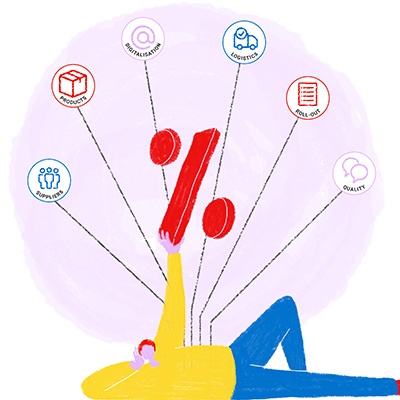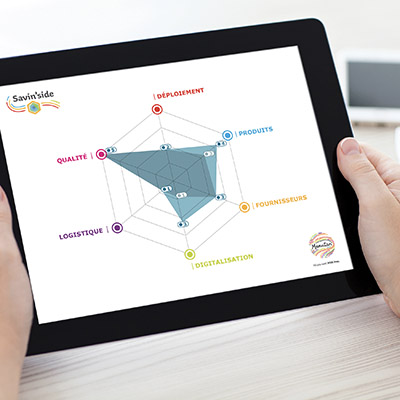In this report, the different phases in the evolution of purchasing are discussed: its prospects, essential preparation, and the skills that will be required. To conclude this attempt to look into the future, it is time to imagine what the daily life of the buyer of the future will be like; what their agenda will be in 2030.
Purchasing in 2030: What Will Be on Its Agenda?
Without a doubt, purchasing departments will be working hard to strengthen the resilience and competitiveness of their company, to enable them to face the profound changes and continual disruptions that they will face over the next decade. To do this, purchasing will need to focus on three major tasks.
Focus More on Internal Customers
Users within organisations have long criticized purchasing departments for using obsolete or non-integrated technologies, purchasing policies, and procedures that are difficult to understand or even display a lack of transparency when it comes to costs. Quizzing internal customers about their needs and their day-to-day frustrations, in order to offer solutions geared towards a better, simpler, and more efficient user experience, will become the new standard. In other words, it is high time to improve the purchasing experience within companies. Procurement must establish its position as a business partner by controlling expenses, influencing purchasing behaviour through the use of tangible information, as well as taking long-term decisions that will benefit their internal customers and, therefore, the company as a whole.
Become More Partner-Oriented
Purchasing departments should adopt a supplier-centric approach. They will then have to create a new operating model to strengthen their relationships with suppliers and optimise their performance, while simultaneously promoting innovation and mitigating risks. Data and analytics play a key role in measuring performance, identifying opportunities, and bringing risks under control. This is especially true as the working environment becomes more complex, with a growing number of partners, with more and more information to be mastered and regulations to be followed.
Deploy Responsible Purchasing
In the medium term, purchasing departments will have to develop a responsible purchasing policy to make it possible to integrate requirements with specifications and criteria that limit the environmental and social impact. Beyond the very pragmatic reasons that make this approach necessary, such as the environmental emergency, ever-increasing regulatory requirements, and the societal role that companies must take on-board, this will allow purchasing departments to seize the extensive opportunities they will have to contribute to the creation of value within their companies. Responsible purchasing represents a powerful lever for optimising costs, reducing risks (particularly in terms of supply and reputation), or even for differentiating the brand in the market.
Procurement in 2030: How Can We Prepare for the Future?
In the era of the digital revolution, purchasing will also have to prepare for the future. Because companies that have undertaken or are undertaking their digital transformation will have an undeniable competitive advantage, the purchasing department will have a major role to play in three main areas.
The Digitalisation of the Purchasing Process
To take full advantage of the profound upheaval brought about by new technology, purchasing departments will have to intervene proactively to develop their own internal digital strategy, as well as that of their company. They will need to go digital as soon as possible to improve all aspects of their operating model. As we have seen in the previous sections, computers will take over administrative and manual tasks, which will allow purchasing to focus on tasks with higher added value, with the focus on building relationships with internal customers and partners.
Data and Analytics
Data and analytics are one of the main levers that will allow purchasing to develop its strategic vision and become more influential within the organisation. The large, disparate volume of unstructured data will be processed with the help of Blockchain and Machine Learning, to provide purchasing teams with precise, relevant, and real-time information. Big data will help them make the right decisions and orient their strategies as effectively as possible.
Team preparation
To master this new environment, the purchasing department will have to acquire new skills, particularly digital ones, and improve its emotional and relational intelligence, which is its main strength. Every buyer must adopt a strategy of continuous learning and demonstrate the agility to thrive in the world of work of tomorrow. A combination of technical knowledge and soft skills will become the main strength of the purchasing professional of tomorrow, along with agility and resilience.
To help their business remain competitive by 2030, purchasing departments will have to rely on innovative digital platforms serving internal customers, in-depth analyses, and highly qualified teams, to create more value for stakeholders, with a long-term strategy.
To study this topic in greater depth, download our white paper to learn how to integrate CSR into the heart of your company's purchasing policy.








